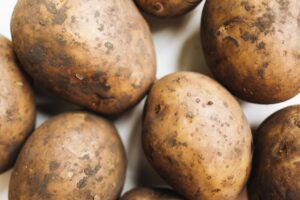
Central Plains Group (CPG) (Lviv region), which includes a modern starch plant, has started the 2025 season, the company’s press service reported on Facebook.
“On March 27, the potato planting season started at CPG,” the company said in a statement.
Central Plains Group clarified that 1.3 thousand hectares of chips, starch, table and seed potatoes are planned to be planted in 2025.
CPG Group started operating in the Lviv region in 2006, and initially grew potatoes on 100 hectares, as well as cereals, rapeseed and sugar beet. In 2021, a potato storage facility with a capacity of 23 thousand tons was put into operation in Lviv region, and in 2022, a starch plant near Lviv with a capacity of 10 thousand tons per year was launched. The area under potatoes averages 1000 hectares.
The main investors in CPG are a group of European potato growers: Mark Laird, Diarmid Johnston, Kate Dawson, Richard Janaway, Alastair Stewart, Oleg Drin, Vince Gillingham.
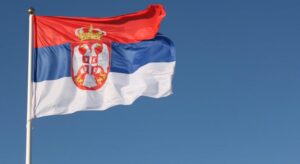
In recent years, Serbia has been actively granting citizenship to foreign nationals, especially from Russia, using the naturalization procedure as an exception. According to the Law on Citizenship of the Republic of Serbia, the government may grant citizenship to individuals if their admission is of interest to the state.
According to the Serbian media outlet Nedeljnik, at least four Russian oligarchs were granted Serbian citizenship in 2025:
Oleg Boyko – estimated to be worth $1.5 billion.
Sergei Lomakin – worth about $1.2 billion.
Yevgeny Strshalkovsky and Yuri Kushnerov – the exact amounts are not disclosed, but are likely to be several hundred million dollars.
The decision to grant citizenship was made by the Serbian government under the leadership of former Prime Minister Milos Vucevic. The formal basis for this was “interest for the Republic of Serbia”, according to Article 19 of the Law on Citizenship. However, the specific reasons and criteria for these individuals to receive Serbian passports remain unclear, especially given the lack of information about their previous business ties to Serbia.
So far, there is no data on whether the new Serbian citizens plan to develop business in the country. However, experts speculate that the granting of citizenship may be related to the desire to attract investment and capital to Serbia. In recent years, Russian entrepreneurs have been actively buying up real estate in Belgrade, Novi Sad, and Serbian resorts.
Statistics on citizenship and residence permits for Russians:
2022: Of the 84 foreign nationals who received Serbian citizenship by government decision, almost two-thirds were Russians.
From February 2022 to December 2024: Russian citizens submitted 73,197 applications for temporary residence in Serbia, of which more than 90% were approved.
February 2025: The number of Russians actually living in Serbia is estimated at 80,000-110,000.
Reasons for granting citizenship
Serbian President Aleksandar Vucic has previously stated that the accelerated granting of citizenship to Russians and Ukrainians is due to a shortage of labor in the country. Priority is given to those who open companies and create jobs for Serbian citizens. However, in the case of Russian billionaires, it is unclear how their citizenship contributes to the development of the Serbian economy.
Thus, Serbia continues to use the granting of citizenship as a tool to attract investment and business ties. However, the lack of transparency in the criteria for naturalization raises questions about the real motives behind such decisions. Against the backdrop of the geopolitical situation, the interest of Russian businessmen in the Serbian passport is likely to be related not only to investment opportunities, but also to the possibility of obtaining a new legal status in Europe.
Source: https://t.me/relocationrs/755

Ukrzaliznytsia (UZ) has signed two agreements to supply 32 thousand tons of rails from China as part of the relevant tenders.
According to UZ, for the first time since 2021, it has conducted a successful competitive purchase of rails through open bidding in the Prozorro system.
“In January 2025, two contracts were signed for the supply of 32 thousand tons of this critically important product. These volumes will be enough to build and repair about 245 km of tracks,” the press release states.
It is specified that under the contract, the price of the rail is $960 per ton (excluding VAT), which is significantly cheaper than previous contracts.
“Our experts visited the rail production site in China, where the first batch of 16 thousand tons has already been rolled, and conducted a detailed inspection of the products and familiarized themselves with the production process. The rail will be shipped from the port in April, and we expect it to arrive in Ukraine in three months,” the statement said.
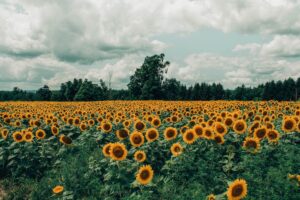
As of April 4, Ukraine sowed 926 thousand hectares of spring grains and legumes, up 8.7% year-on-year, and started sowing sunflower, the press service of the Ministry of Agrarian Policy and Food reported on Friday.
According to the report, 116.5 thousand hectares were planted with wheat (79.8 thousand hectares a week earlier), 551.8 thousand hectares with barley (315.5 thousand hectares), 164.3 thousand hectares with peas (102.9 thousand hectares), and 82.3 thousand hectares with oats (50.7 thousand hectares).
According to the Ministry of Agrarian Policy, Odesa region is the leader in terms of sowing rates, having sown spring crops on 92.3.1 thou hectares, Ternopil region – 87.4 thou hectares, Poltava region – 83.2 thou hectares, Mykolaiv region – 73.6 thou hectares, Vinnytsia region – 72.6 thou hectares.
In addition, 33 thou hectares have already been planted with sunflower, 64.8 thou hectares with sugar beet, and 2.6 thou hectares with soybeans.
The Ministry reminded that in general, in 2025, it is planned to plant more than 5.7 mln ha of spring grains and legumes, which corresponds to the level of 2024. The main feature of the new season will be an increase in the area under spring wheat by 28%, to 222.8 thou hectares. Such changes in the crop structure are in line with the stable demand from processing companies and exporters.
As reported, as of April 4, 2024, the total area under spring grains and pulses was 852.1 thsd ha. Peas were planted on 119.0 thou hectares, barley – on 543.2 thou hectares, wheat – on 118.3 thou hectares, oats – on 62.4 thou hectares.
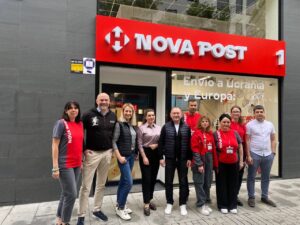
Nova Poshta, the leader in express shipping in Ukraine, has opened a branch in Madrid, the seventh city where the company has a presence with stationary offices in Spain, the company’s press service said.
According to the company’s announcement on Friday, Nova Poshta plans to expand its network in southern Spain, with new offices to open in Benidorm, Marbella, and Valencia.
“Nova Poshta has opened a branch in the Spanish capital of Madrid. The new service point is located in Madrid at: C. del Cañaveral, 95, Bajos 1, 28029. Here you can quickly send and receive documents and parcels weighing up to 30 kg and measuring up to 120×70×70 cm,” the company’s press service said.
According to the CEO of Nova Post in Spain, Sergey Karputev, the next step is to expand its network to the south of Spain.
“We plan to open branches in Benidorm, Marbella and another in Valencia,” Karputev said.
He noted that over 18.5 thousand customers use Nova Poshta services in Spain, including more than 350 businesses.
Madrid has become the seventh city in Spain where Nova Poshta has a presence with stationary offices. Since 2024, the company has opened branches in Barcelona, Valencia, Alicante, Torrevieja and Málaga.
“Nova Poshta delivers packages to any address in Madrid, across Spain, and to 17 European countries. Recently, Nova Poshta launched delivery to Portugal. Delivery time from Ukraine to Spain is 5 days or more.
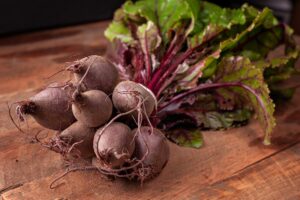
Astarta, Ukraine’s largest sugar producer, has already sown more than 60% of the planned sugar beet area and started sowing sunflower, the company’s press service reports on Facebook.
“The minimum moisture reserves in the soil due to the lack of precipitation in the autumn-winter period and rapid spring warming forced us to quickly adapt agricultural technologies to make the most of the favorable sowing windows,” the agricultural holding explained.
According to the report, Astarta has allocated the planned sown areas for strategic crops as follows: sugar beet – 34 thousand hectares, soybeans – 55 thousand hectares (including 3 thousand hectares for seeds), winter wheat – 46 thousand hectares (including 3 thousand hectares for seeds), sunflower – 28 thousand hectares, winter rapeseed – 13 thousand hectares, corn – 13 thousand hectares. The area under organic farming is 2 thou hectares. At the same time, the actual total structure of Astarta’s acreage will be clarified based on the results of the sowing campaign.
“Astarta is a vertically integrated agro-industrial holding company operating in eight regions of Ukraine. It comprises six sugar factories, agricultural enterprises with a land bank of 220 thousand hectares and dairy farms with 22 thousand cattle, an oil extraction plant in Globyno (Poltava region), seven elevators and a biogas complex.
In 2023, the agricultural holding reduced its net profit by 5.0% to EUR 61.9 million, and its EBITDA decreased by 6.1% to EUR 145.77 million, while revenue increased by 21.3% to EUR 618.93 million.